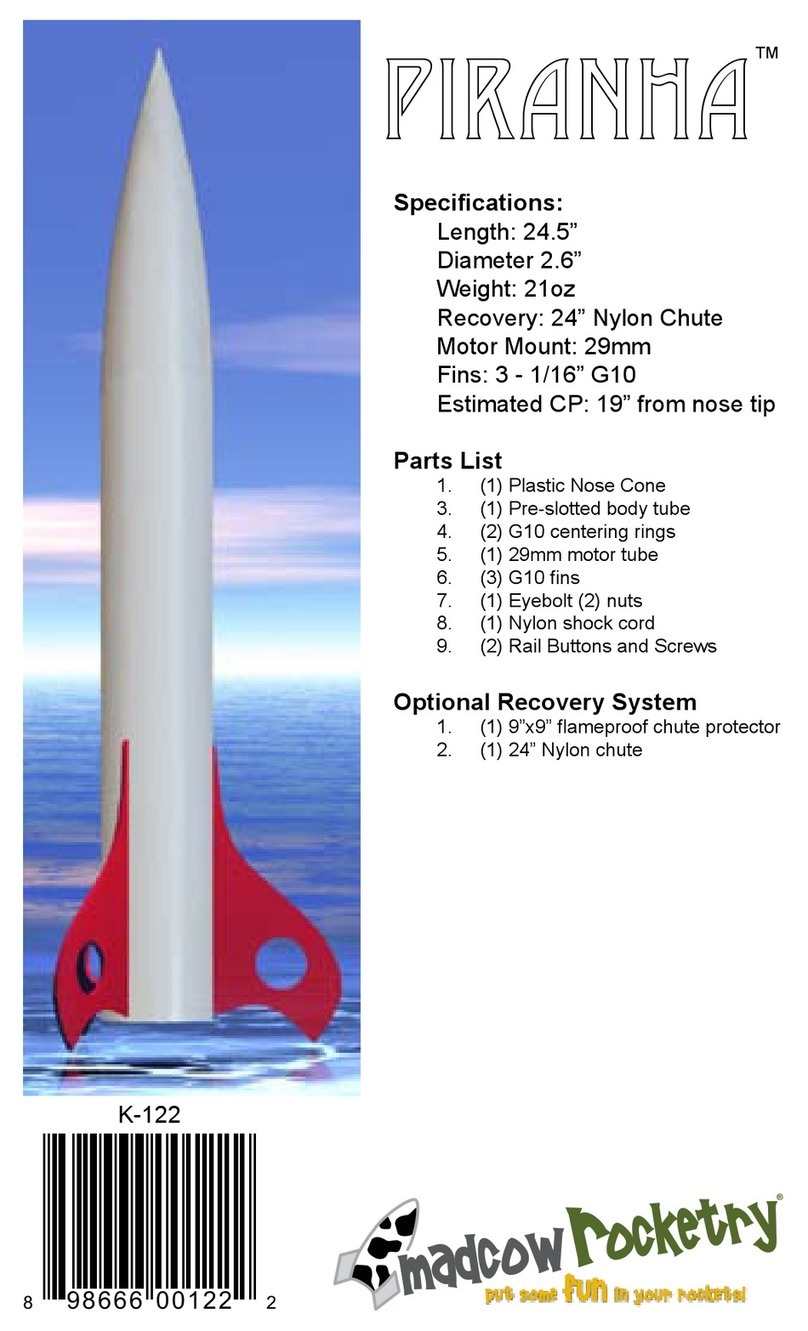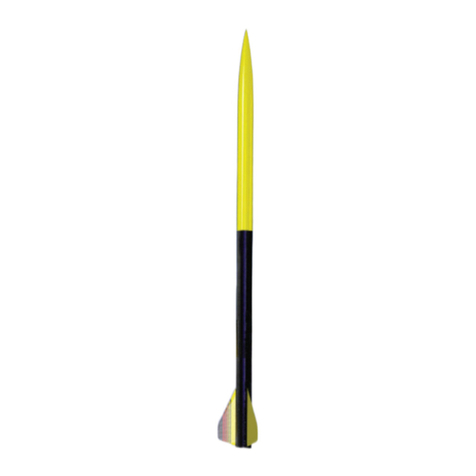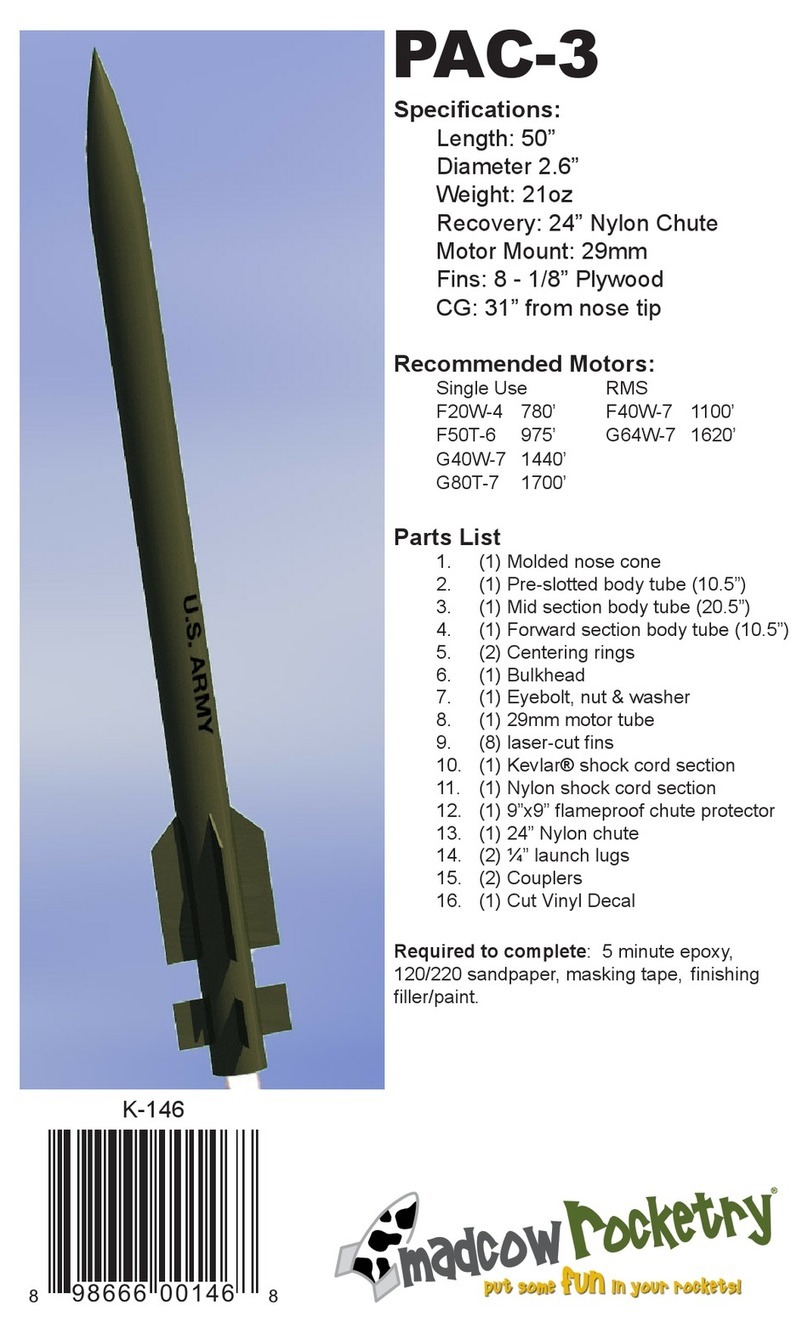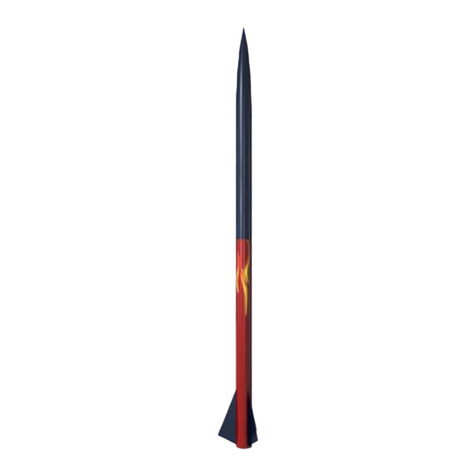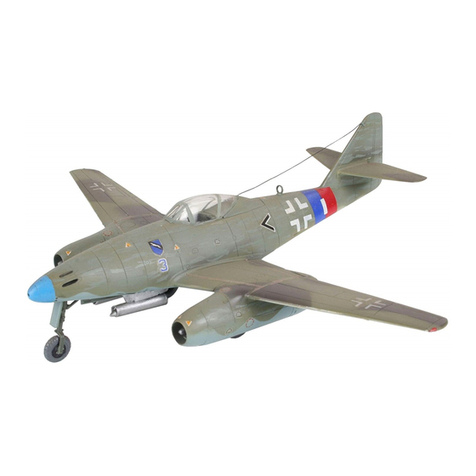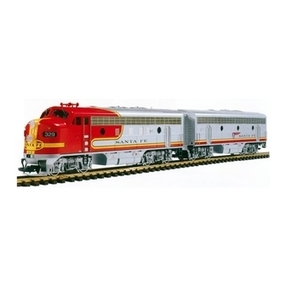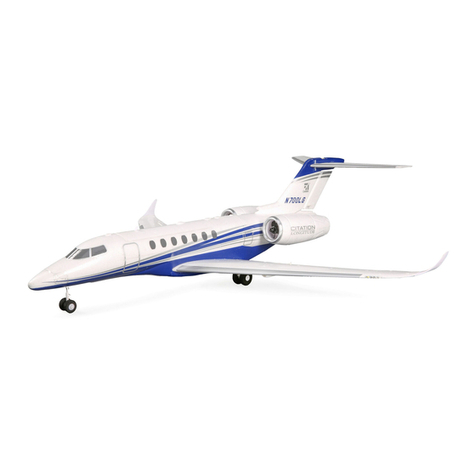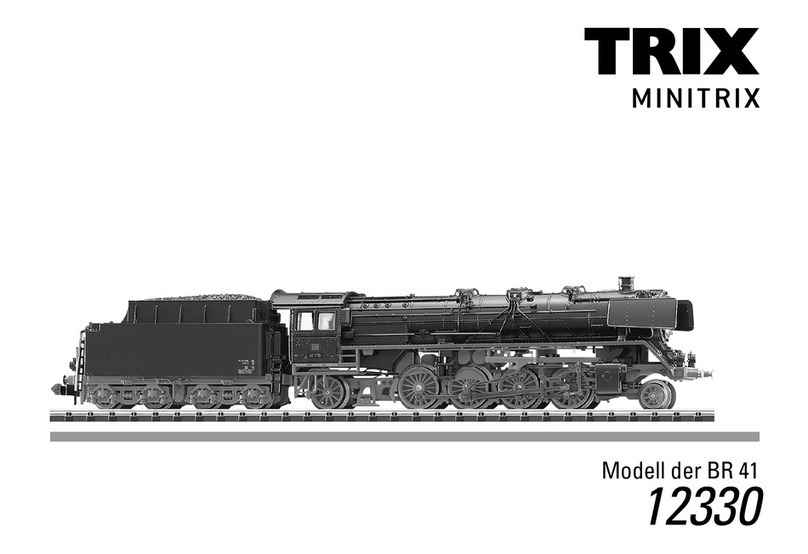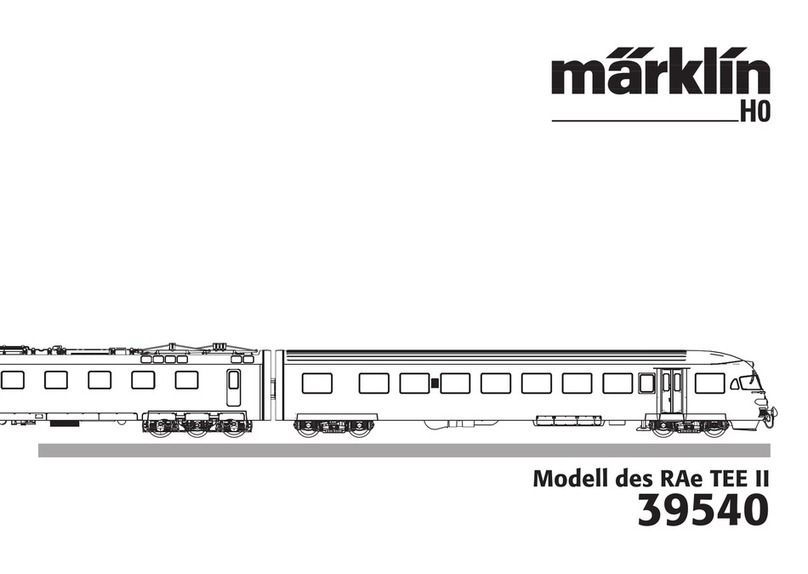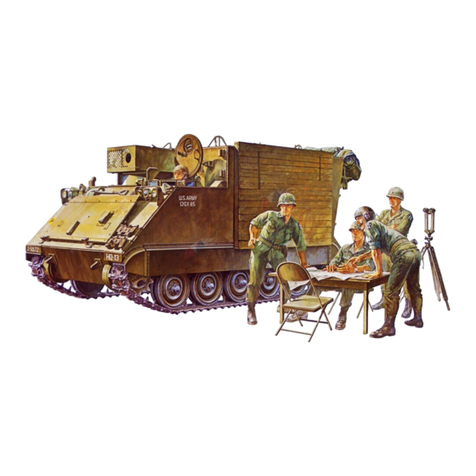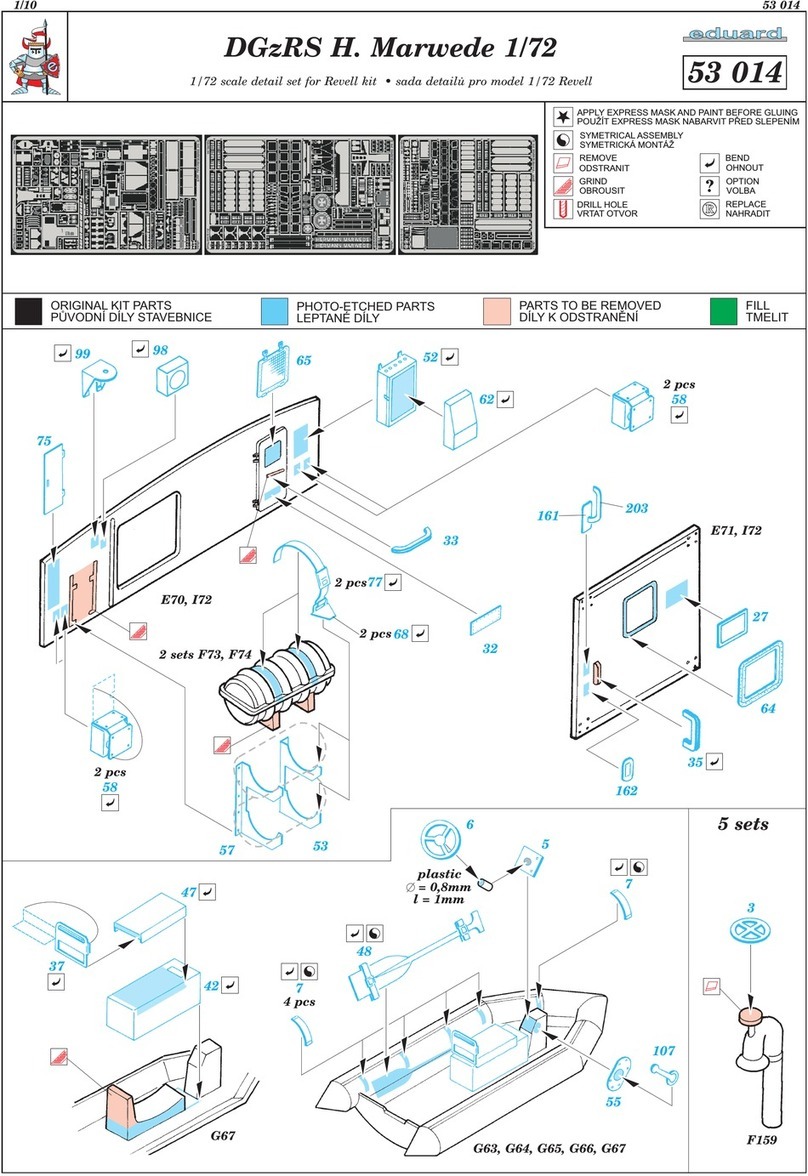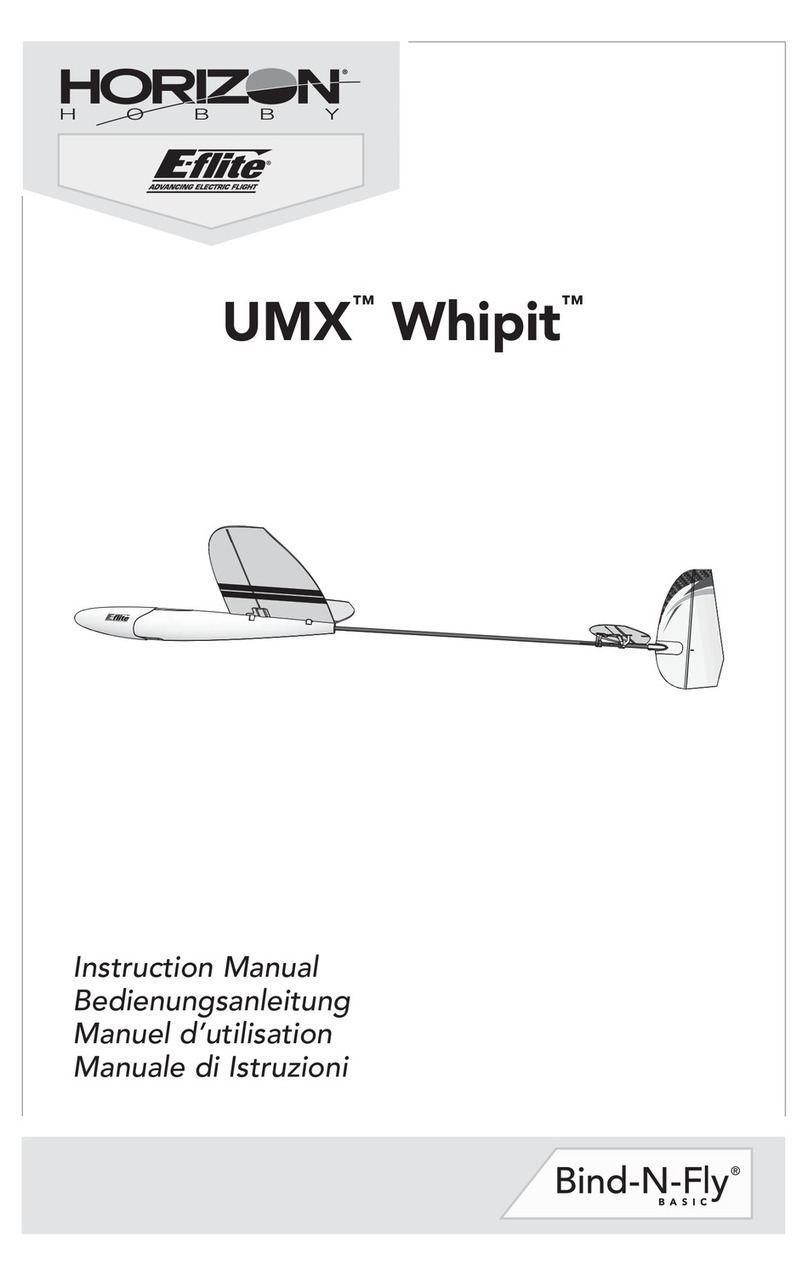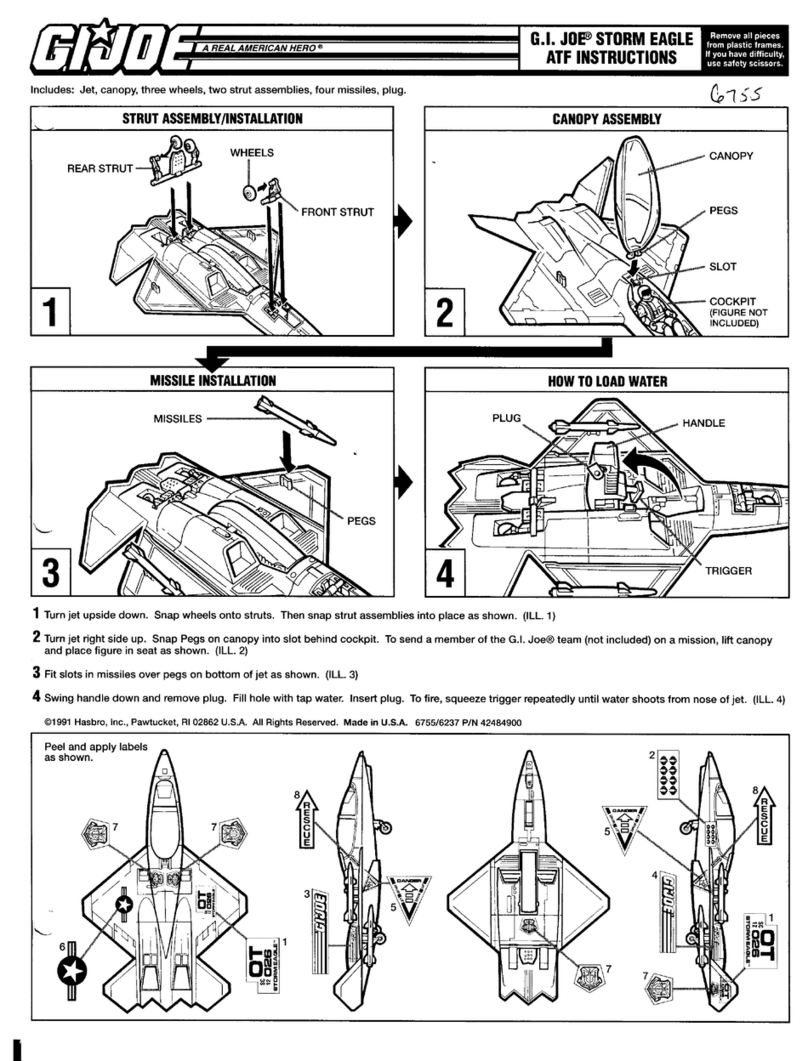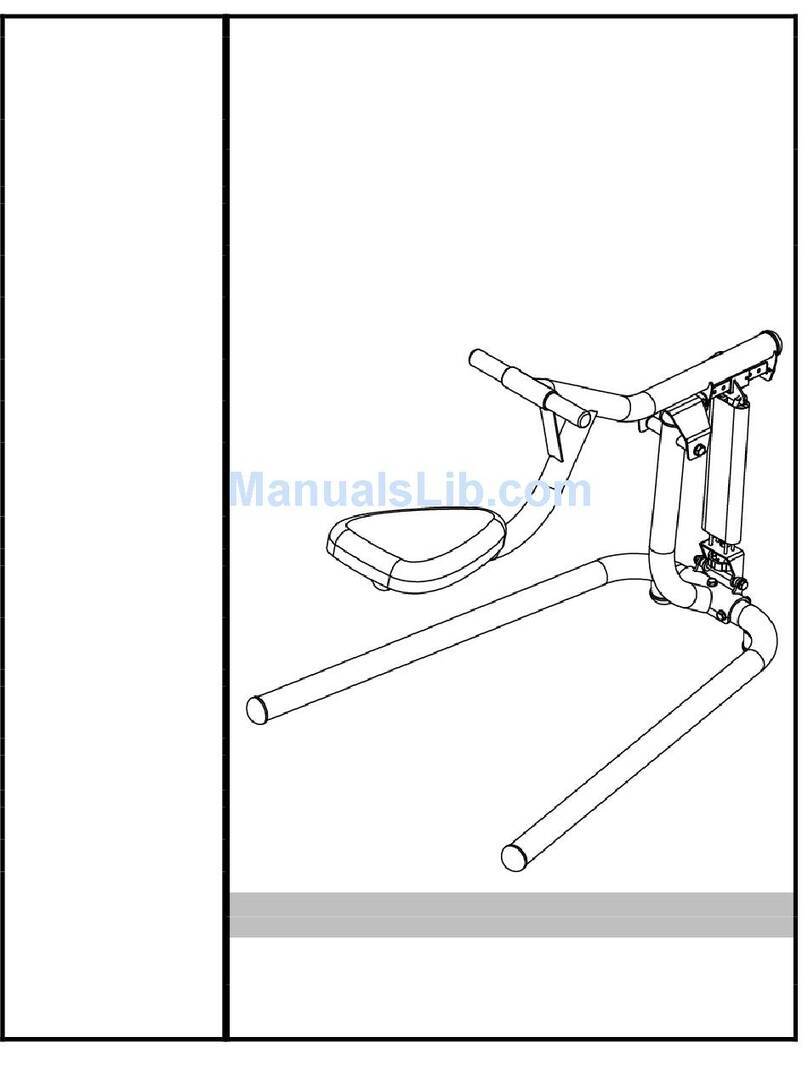
2 ©2015 MadCow Rocketry™ mini DX3™ Assembly mini DX3™ Assembly ©2015 MadCow Rocketry™ 3
Please make sure you read all directions and understand how to assemble your model
beforeyoustartconstruction.Itisalsoagoodideatotestteachpartbeforeassembly
–somemanufacturingtolerancesmayrequirelightsandingbeforenalassembly.
Laser cut parts will exhibit varying amounts of charring on the edges depending on the
density of the plywood. The charred edges do not interfere with bonding and do not
need to be cleaned before assembly. In most cases the charring will be cleaned up
duringsandingfornishingandpainting.
Step 1 – Motor Mount Assembly
Step 2 – Insert Motor Tube Assembly into Body Tube
Testteachofthensintotheprecutnslots.Because
plywood thickness varies, you may need to sand the slot
to the correct width. Wrap the shock chord into a small
bundle and stuff it inside the motor tube for this next step.
Testtthemotortubeassemblyintothebodytubeto
ensureasnugt.Sandthecenteringringsifnecessary.
Whenyouaresatisedwiththet,spreadsomeepoxyon
the inside of the body tube and slide the forward centering
ring of the motor assembly into the body tube. Make
sure you have the motor assembly facing the right
way! Spread some more epoxy on the inside edge of the
body tube before sliding the rear centering ring into the body tube. Continue sliding the
assemblyinsidethebodytubeuntiltheaftcenteringringsarejustclearofthenslots.
It’sagoodideatotesttanineachslotherebeforetheepoxysets.Holdthebody
tube with the motor tube assembly down until the epoxy sets. Make sure the weight of
the motor tube doesn’t cause it to slide out of alignment.
Step 3 – Fin Assembly
Using a door jam or small section of angle stock, pencil a line halfway between two of
thensthatextendsfromthefronttothebackofthebodytube.Thislinewillbeused
latertoalignthelaunchlugs.Testteachofthensintotheprecutnslots.Then
shouldseatrmlyagainstthemotortube-sandeachnorslotifnecessary.Whenyou
aresatisedwiththet,applysomeepoxytotheendofthentangthatwillcontactthe
motortube.Also,spreadathinlayerofepoxyoneachsideofthentang.Slidethen
intoplaceandcheckthealignment.Continuerecheckingthenalignmentuntilyouare
suretheepoxyhasset.Cleananyexcessepoxyfromaroundthenjoint.Repeatfor
theremainingns.Next,applyepoxylletstobothsidesofeachnbyapplyingathin
beadofepoxyatthen-bodytubejoing.Carefullysmooththeepoxylletswithyour
ngerbeforetheepoxysets.Alloweachllettosetbeforerotatingtheairframeforthe
nextllet.
Testtcenteringringsoverthemotormounttubeandsandmotortubeifnecessary.Also
testtthecenteringringsinthebodytubeandsandifnecessary.Spreadsomeepoxyon
the outside of one end of the motor tube and slide the ring (without the notch) until there
is approximately 1/2” of motor tube exposed. Make sure you clean the motor tube of any
epoxysoasnottointerferewiththentangslater.Aftertheaftringisdry,makeamark
1/2” from the other end of the motor tube. Spread some epoxy on the motor tube and
slide the forward ring until it aligns with the mark. VERY IMPORTANT: make sure there
is not any epoxy on the motor tube that would interfere with the n tangs later on.
Fin
Fin Tang
1/2” Exposed
1/2” Exposed
Forward Ring Notch
Push cord in corner and
tack with epoxy
The shock cord in this kit consists
of a shorter section of Kevlar and a
longer section of nylon cording. The
two sections should be tied together
using a single overhand, ring bend
ordoublesherman’sknot.The
Kevlar section will be attached to
the motor mount and the nylon
section will be attached to the nose
cone.
Wrap the end of the Kevlar shock
cord around the forward end of the
motor tube and tack in place with
CA.Makesurethecordlaysat
enough so it will not interfere with
the body tube when you slide the
motor tube inside. Apply some
epoxy to the cord to hold it in place.
Make sure the cord is secure
and will not come loose later with
ejection forces that will pull on the
shock cord.
Step 5 – Launch Lug
Mark the CP point along the launch lug line you made in the previous step. Make sure
you measure the CP point from the tip of the nose cone and NOT the end of the body
tube. Apply a small amount of epoxy on the launch lug line about ¾” long on the CP
mark. Press one of the launch lugs into the epoxy and ensure that it is aligned with the
launch lug line previously drawn on the body tube. You can site down the tube and look
through the launch lug to make sure it is straight. Similarly epoxy the second launch
lugabout2”fromtheaftendofthebodytube(alignedwiththeaftendofthens).Site
down both launch lugs and make sure they are both aligned. If you have a ¼” launch
rod, you can use this to ensure that both lugs are aligned properly.
Ensureringsareclearofthenslots
Step 4 – Forward Section Assembly
Insert the eyebolt through the hole in the center of the bulkhead and secure using the
washer and nut. IMPORTANT: Apply some epoxy to the nut and eyebolt threads
to ensure the nut doesn’t come loose later. Apply some epoxy to the inside of the
coupler and push the bulkhead in so there is about a 1/8” to ¼” of coupler exposed.
Aftertheepoxyhasset,applyalletofepoxyaroundtheinsideedgeofthecoupler
bulkhead joint.
Next mark the coupler 2” from the forward edge. Apply some epoxy to the inside of the
forward body tube section and slide the coupler up to the mark. There should be 2”
of coupler exposed. Make sure the coupler is straight and the body tubes are aligned
properly when they are assembled later.
Step 6 – Balancing Your Model
Assembleyourmodelandinsertthelargestmotoryouintendtoy(orsimulatethe
weight with a substitute) and ensure that the CG is at least 1 body diameter in front of the
estimatedCPpointspeciedontherstpage.TheCPpointismeasuredfromthetipof
